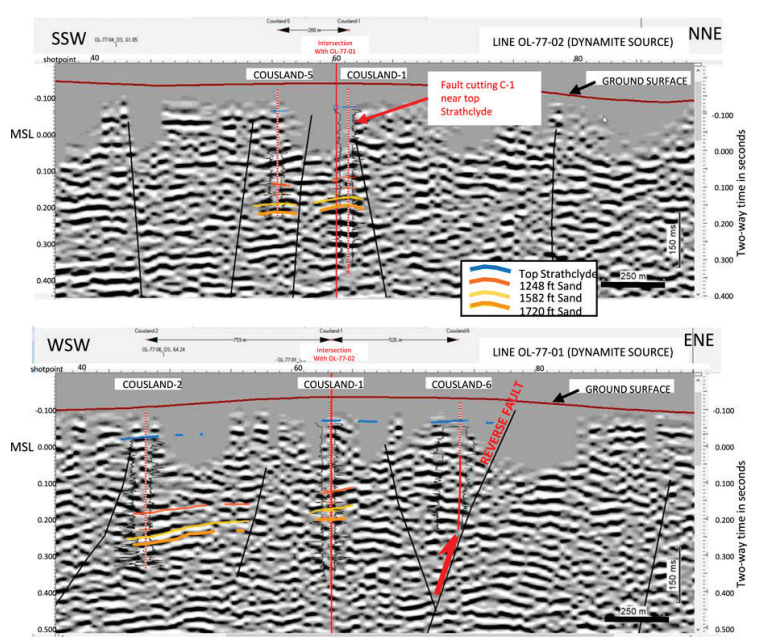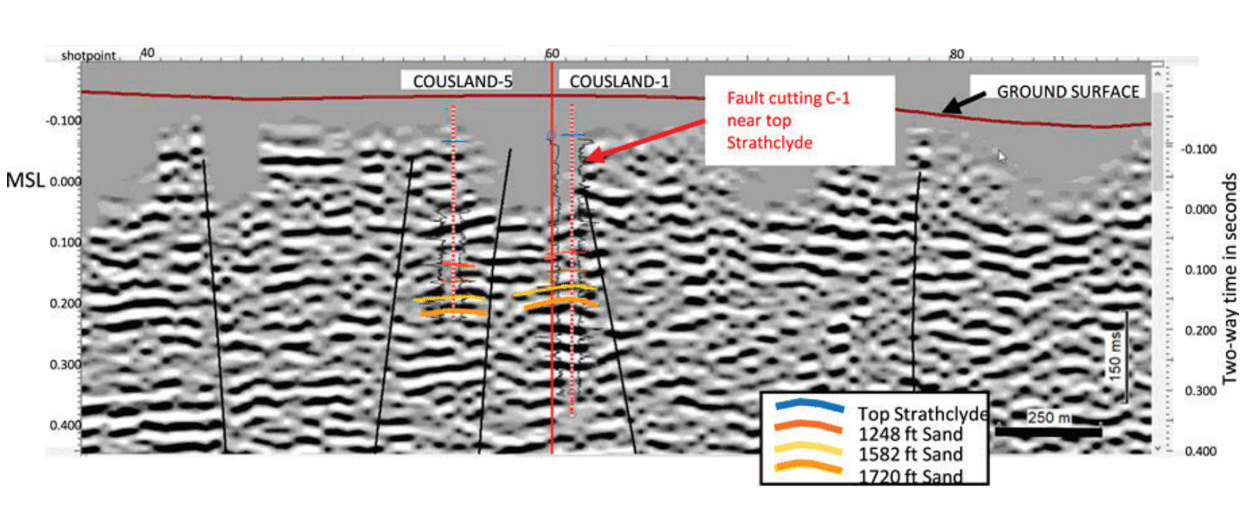Onshore seismic is always more of a challenge to interpret than marine seismic data, and the seismic lines from the area around Cousland to the southeast of Edinburgh that Malcolm Butler (UK Onshore Geophysical Library, UKOGL) showed during his Aberdeen Energy Talk in March this year, proved that concept once more. The non-migrated seismic lines as available at UKOGL do not allow easy tracing of the horizons as found in the wells, which is further hampered by gaps in near-surface data resulting from the inability to shoot dynamite in some places.
Yet, based on data of this kind, the former Cousland gas field was proposed to be a candidate for storage of hydrogen in Scotland, probably driven by a desire from the government to come up with tangible candidates that make the energy transition more concrete. Unfortunately, the geology of onshore Scotland is not characterised by the presence of extensive layers of salt and associated caverns in which hydrogen storage is currently taking place further south in England. Neither are there many depleted gas fields that have a track record of storing gas.
SURROUNDED BY MINES
The Cousland former gas field is also particular because it is surrounded by former coal mines. This not only hampers any future seismic acquisition: The mines also form potential sites for the buildup of hydrogen in case of seal integrity issues.
A tiny field
But, Cousland is one of the few. Drilled in 1939, Cousland-1 found gas at around 310 m during a national campaign that had the purpose of finding oil. Even though five subsequent appraisal wells failed to prove more gas, Cousland was taken into production and around 0.25 billion standard cubic feet of gas was produced between 1939 and 1965.

The fact that none of the Cousland appraisal wells found gas is already a sign that mapping of the closure was impossible; the extent of the sealing units is another matter of concern. Especially in the light of storing a small molecule as hydrogen, it is unfortunate that no porosity logs were run in any of the wells to provide a better indication of the integrity of the seals. The lack of seismic data with sufficient resolution also prevents mapping the extent and thickness of the seal, in addition to better understanding the distribution of the reservoir itself.
Based on these and more findings, Malcolm Butler and John Underhill (Aberdeen University) therefore challenged the idea of using Cousland as a hydrogen store in a recent article in ES3 – Earth Science, Systems and Society. Based on this article, it seems unlikely that the go ahead will be given for this project anytime soon.

